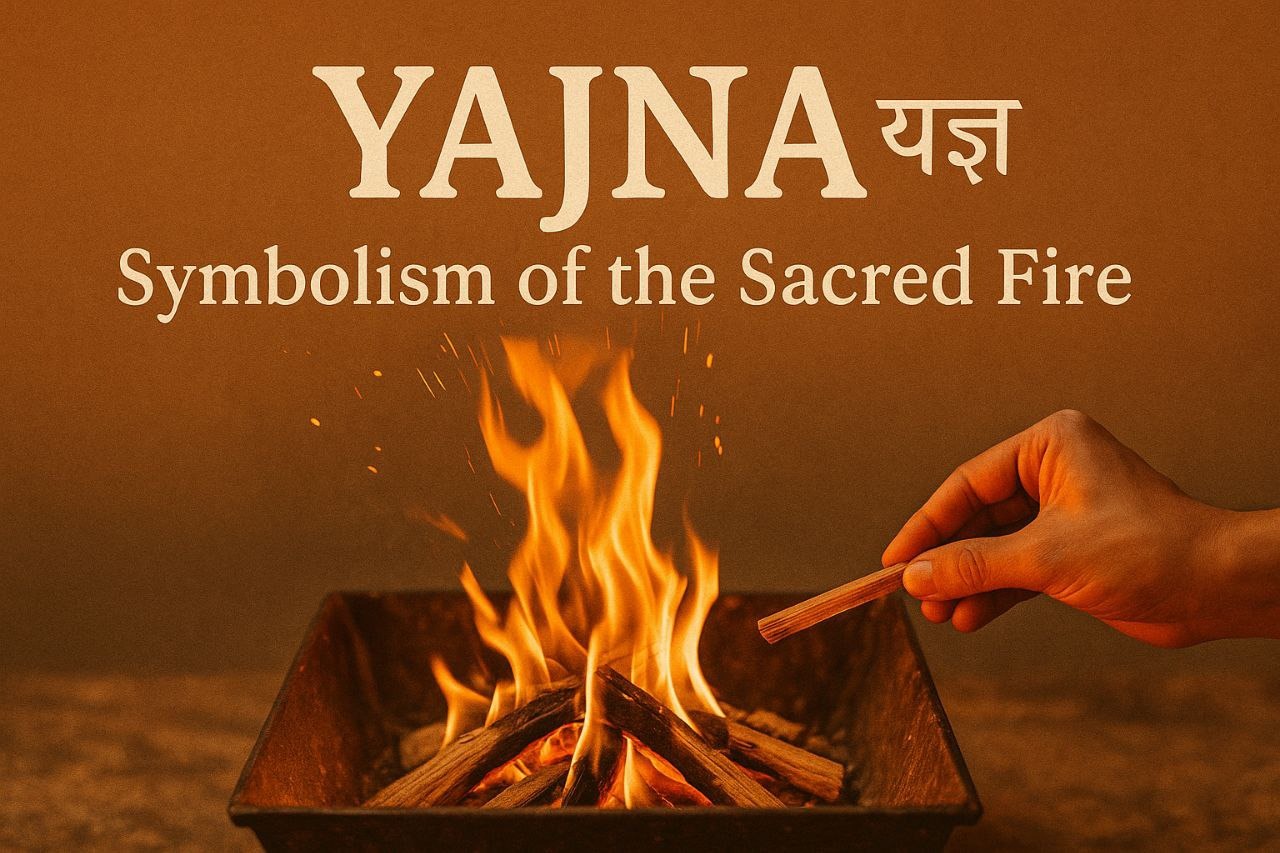Yajña ~ Symbolism of the Sacred Fire

Yajña, often translated as “sacrifice”, is one of the oldest and most powerful practices in Sanatan Dharma, a ritual of fire that transcends mere offering and becomes a profound symbol of transformation. More than physical flames, yajña represents the sacred flow of energy, consciousness, and intention between the human and the divine.
“In the flames of yajña, the finite offers its best, and the divine returns with unseen gifts.” ~ Adarsh Singh
🔥 What Is Yajña?
Classically, a yajña involves offerings, such as ghee (clarified butter), grains, and fragrant woods, cast into a sacred fire, fueled and guided by mantras and priestly intention. But beneath the external ritual lies a deeper consecration: offering what you cherish most, with detachment and devotion, and trusting that the offering transforms both giver and receiver.
🌐 Symbolic Dimensions
Fire as Divine Transformative Power: Fire consumes physical offerings and returns them in the form of smoke, heat, light, symbolizing the metamorphosis of the lower into the higher.
Sacred Exchange: The act of giving to the fire is not loss but offering to the inner Truth, trusting that consciousness reciprocates in unseen ways.
Cosmic Intelligence: Fire connects earth, water, and air; it is the energetic bridge linking mortal offerings to immortal reality.
“Yajña is not what you burn, it is what you become in the burning.” ~ Adarsh Singh
🌀 Internal and External Yajña
External Yajña: Traditional rituals performed in sacred fire, such as Vedic havans or homas, to purify environment and consciousness.
Inner Yajña: Offering thoughts, emotions, and actions, especially selfless service, to the divine fire of awareness. Every act done with detachment and devotion becomes a yajña.
Yoga Yajña: The everyday practice of aligning body, speech, and mind with noble thoughts and actions.
🕯️ Historical and Scriptural Foundations
Vedic hymn: “Yajñena yajñamayah lokaḥ” ~ “Through sacrifice, the universe is sustained.”
The Bhagavad Gītā frames life itself as yajña:
“All that is offered in sacrifice, all austerity, all gifts, even acts of penance, should be done as yajña, not for personal gain.” (Gītā 3.9)
Every thought, word, and act, when offered with intention and surrender, participates in cosmic reciprocity.
🔄 Yajña as a Pathway to Harmony
Personal purification: Mind becomes clear, desires refine, ego softens.
Community uplift: Shared yajñas, like havans, annadāna, or seva, unify individuals and uplift society.
Cosmic alignment: The fire ritual synchronizes human action with universal consciousness.
“A yajña done with presence purifies not just the altar, it elevates the one offering.” ~ Adarsh Singh
🧘 Practicing Yajña in Modern Life
Light a diya quietly, chant a mantra, and offer your breath or intention to it.
Do your work as yajña karma: let every act, big or small, be done in service, not attachment.
Let selfless action, helping someone, teaching, caring, be a living puja to the divine fire within.
“When your service flows without expectation, it becomes yajña, and the world becomes the altar.” ~ Adarsh Singh
Yajña is not an archaic fire ritual, it's a living tapestry woven through breath, awareness, and surrender. It reminds us that true offerings are not given but evolved. Through yajña, the spiritual generates the spiritual, the finite awakens to the infinite, and the individual merges with the cosmic Self.
“Let your life be a yajña, the fire of your intention embracing the flame of the divine.” ~ Adarsh Singh
Wed Jul 23, 2025
